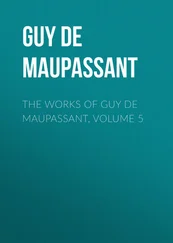However, von Liebig did not produce this data himself, rather he invented the research group as a quasi-industrial means of producing scientific results. Taking over an unused barracks as a chemical laboratory, he staffed it with junior scientists as lieutenants, students as foot soldiers and with himself as the distant but all-powerful general. This model of the research group was so successful in producing the large volumes of research required in the industrial world that it was widely adopted and remains the main means of producing scientific research today. This is in strong contrast to the pre-industrial system of the individual scientist thinking up experiments and carrying them out himself, with or without assistance. Von Liebig was both arrogant and argumentative and had a number of angry disputes with other scientists. His success gave him considerable power, through his control over scientific journals, appointments, and societies. The parallels with science today are unavoidable. It is dominated by a relatively small number of politicians of science who control the boards of scientific societies, journals, conferences, grant-giving bodies, and appointment boards. Success in a scientific career still depends to a certain degree on gaining the patronage of these politician-scientists.
Von Liebig started the prodigious task of analysing the millions of different combinations of elements – molecules – that make up a human being. Some kind of order was brought to this chaos by distinguishing three main types of molecule: carbohydrates, fats, and proteins. At first it was thought that these ‘organic’ molecules could only be produced by living organisms, using some kind of vital force. But in 1828 Friedrich Wöhler, a friend and colleague of von Liebig, found that he could chemically synthesize urea (an important component of urine) without any living processes being involved. Ultimately, this would lead to the melting of the boundary between the living and the non-living, but not yet.
Although von Liebig showed that living organisms were constructed from a large number of organic chemicals, he believed that a ‘vital force’ was required to prevent these complex chemicals from spontaneously breaking down. He came to this conclusion because, in the absence of life, they did tend to break down, either by oxidation (combination with oxygen as in burning), putrefaction (as in flesh after death), or fermentation (conversion of sugar to alcohol). Von Liebig’s concept of vital force was similar to that of a physical force such as gravity or the electric force, but was only present in living organisms. Within the living body, this vital force opposed the action of the chemical forces (causing oxidation, putrefaction and fermentation), thus preventing the decay of the body so evident after death. Von Liebig also claimed that the vital force caused muscle contraction because he thought there could be no other way to account for the control of muscle by mind. When a muscle contracted, some of the vital force was used up to power the contraction. Consequently, immediately after the contraction, there was less vital force to oppose the decay (oxidation) of chemicals in the muscle, which therefore speeded up with an associated increase in respiration. The vital force acted as a brake on the chemical forces and when it was consumed by muscle contraction, the chemical forces speeded up. This is akin to the famous story of Peter, the little Dutch boy, sticking his finger in the leaking dam, trying to prevent the sea washing away the fields and town (just as the vital force prevented the chemical forces from eroding the body). This erroneous interpretation was used to explain Lavoisier and Séguin’s important discovery that respiration (the process of consuming oxygen to produce carbon dioxide and heat) greatly increased when a human or animal was working or exercising. Although von Liebig’s conception of the vital force was a form of vitalism, in the tradition of Aristotle, Paracelsus, and Stahl, the concept was more mechanistic in its appeal to Newtonian forces and foreshadows the concept of energy, formulated in the mid-nineteenth century.
Von Liebig’s belief that everything could be explained by chemistry and the vital force was opposed by Theodor Schwann (1810–1882). This clash proved catastrophic for the sensitive and as yet unestablished Schwann. Schwann’s productive work lasted just four years (1834– 1838), while he was still only in his twenties, but it was enough to spark a reorganization of biology almost as fundamental as that of Lavoisier’s of chemistry. Schwann’s first venture was to isolate a muscle from a frog and measure the force produced by the contracting muscle when it was held at different lengths or pulled against different weights. He found the muscle contracted with the greatest force when it was at the length that it was naturally found in the body. These experiments were seen as sensational in Germany, because for the very first time a vital process supposedly mediated by a vital force was treated and quantified in the same way as an ordinary physical force. It was now possible to give a physical account of vital processes, or reduce them to physical forces. This approach, however, did not please von Liebig and other champions of the vital force. Indeed Mayer later used Schwann’s experiment specifically to disprove von Liebig’s account of muscle contraction.
Schwann’s next achievement was the isolation of an enzyme which he called pepsin from the digestive juices. An enzyme is a biological substance present in small quantities which promotes a chemical reaction without being itself converted by the reaction. But ‘enzyme’ is a twentieth-century notion, in the nineteenth century they were known as ‘ferments’. For the alchemists, a ferment was a small quantity of active substance which when added to a passive substance could transform it into an active one similar to the ferment. For example, fire was the ferment converting flammable substances into flame and the philosopher’s stone was the ferment transmuting base metals into gold. Fermentation is the process responsible for the leavening of dough producing bread and for converting grapes into alcohol, making wine. This apparently magical transformation had been recognized since antiquity, but how exactly this happened was unclear, although it was known to require a ferment – yeast. Having discovered a ferment in digestive juice, Schwann concluded that digestion was a kind of fermentation. Von Liebig and the other chemists considered digestion, on the other hand, as a purely chemical process due to the action of acids on food. So when Schwann published his findings in von Liebig’s journal, von Liebig added a rather sceptical note to his paper.
Schwann then turned his attention to the nature of fermentation itself: one of the central scientific and technological problems of the nineteenth century. Von Liebig and the chemists believed fermentation was purely chemical and did not involve any biological organisms or processes. Schwann and two other researchers independently discovered that fermentation was a biological process caused by a fungus – yeast – the cells of which could be viewed through a microscope and could be destroyed by boiling. Schwann also showed that the putrefaction of meat was biologically mediated too, it could be slowed by heating and sealing the meat. These biological breakthroughs incensed the chemists who soon got their revenge. In the meantime, Schwann embarked on a microscopic study of the role of cells in animal development and in biology generally. The resulting ‘cell theory’ published in 1839 revolutionized how the body was viewed.
Since the theory of the four humours, the important components of the body had been thought to be the fluids and airs: the blood, phlegm, bile, urine, semen, cerebral-spinal fluid and pneuma . The important locations inside the body were the cavities (of heart, lungs, brain, guts, and blood vessels) where life was manifested in the turbulent motions of fluids and airs. The solid parts of the body (the ‘flesh’) were regarded as largely structural, perhaps because their very solidity and lack of motion argued against any involvement in change; therefore it was hard to conceive how they might be involved in the vital processes. Schwann changed all that, showing that the tissues were composed of cells and it was within the cells that most vital processes were generated. The cells were not static structures: they had a life of their own. They grew, reproduced, changed into different forms and died. Most importantly the power to cause change was located within the cells themselves, not their surroundings. Schwann called this power ‘metabolism’, from the Greek word for change. This ‘intracellular metabolism’ was responsible for fermentation by yeast and for respiration and heat production by all cells. If the secrets of life and energy were to be found, science would now have to follow the trail into the cell rather than pursuing phantom airs and vital forces. And this would require entirely new concepts and methods.
Читать дальше












